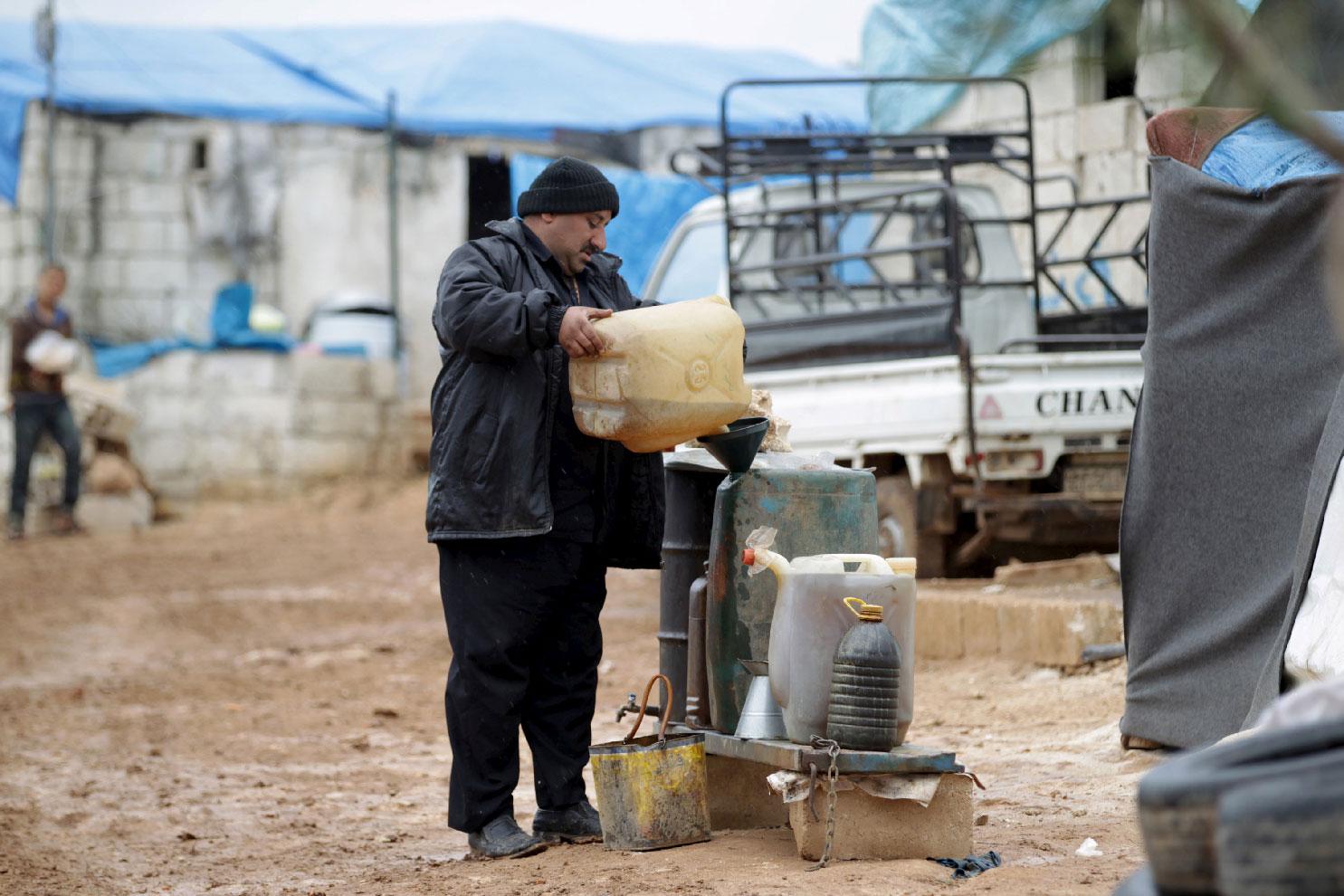Syrian jihadists attack Turkish-backed rebels in Idlib
BEIRUT - A jihadist assault gained ground on Tuesday against Turkish-backed rebels in northwest Syria, edging closer to frontlines with government forces, a rebel official and a war monitor said.
The advance raises questions about the fate of September's demilitarisation deal between Turkey and Russia, which staved off a Syrian army offensive against the Idlib region.
Hayat Tahrir al Sham (HTS), spearheaded by al Qaeda's former Syrian affiliate, is expanding its grip over the insurgent enclave, which includes Idlib province and adjacent bits of Aleppo, Hama and Latakia provinces.
Ideological differences divide HTS from nationalist groups in the Free Syrian Army gathered under the banner of the National Army and the National Liberation Front (NLF), both backed by Turkey.
'No option but to fight'
Idlib lies in Syria's northwest corner, the last opposition stronghold, where Turkish forces are stationed. It borders territory that Turkey-backed rebels control near the Turkish frontier.
The main Turkish-backed rebel force, the National Army, has deployed along fronts close to the jihadists to repel any new militant advance towards them.
National Army spokesman Major Youssef Hamoud said HTS militants seized four villages in al-Ghab plain from rival rebels on Tuesday.
"We call on (the rebel factions) inside Idlib to launch an operation so that we can try to open a new front and relieve some pressure off them," he said.
He said HTS jihadsists, who launched their offensive last week, were preparing to march towards the key towns of Ariha and Maarat al-Numan in Idlib.
The Syrian Observatory for Human Rights said fierce battles raged in al-Ghab plain. The British-based monitoring group said if HTS did take Ariha, Maarat al-Numan and some villages in between, it would effectively control all Idlib.
The fighting was taking place inside a buffer zone that the Russian-Turkish deal had established along the front lines, the Observatory and a resident said.
The resident of Sahl al-Ghab said Turkish-backed factions had "no option but to fight to the death".
"The factions are enclosed in a very small area." HTS gains had displaced some civilians towards government territory, the resident added.
What has the deal achieved?
For nearly four months, the Russian-Turkish ceasefire deal has protected three million people in Idlib from a major regime offensive.
But the recent jihadist advance inside the northwestern stronghold, and a possible US troop pullout from the war-torn country, threatens to derail it.
On September 17, regime ally Russia and rebel backer Turkey inked a deal to set up a buffer zone around the Idlib region to avert a threatened government offensive.
Under the agreement, jihadists were supposed to withdraw from a buffer zone along the U-shaped front line around the region by October 15, but they never did.
The truce seems to have held however, and, with the exception of sporadic bombardment and skirmishes, it has stopped an all-out military campaign to retake it.
To a certain extent, the agreement has been "pretty successful", analyst Aron Lund said.
"Now things are calm in Idlib, at least compared to the horror show that could have happened," said the fellow with The Century Foundation.
But without a withdrawal by hardliners from the planned buffer zone, all parts of the deal were not implemented.
In particular, two key highways running through Idlib -- the M4 and the M5 -- were never reopened to reconnect government-held areas with the Turkish border.
What are the jihadists up to?
Rebel territory consists of most of Idlib province and adjacent parts of Aleppo and Hama provinces.
More than half of the stronghold is held by HTS while a Turkish-backed alliance, the National Liberation Front (NLF), holds most of the rest.
In recent days, HTS has gained territory in the northeast of the enclave from the NLF, the Syrian Observatory says.
"HTS is now in control of all insurgent areas in the west of Aleppo province," after beating a key component of the NLF, Observatory chief Rami Abdel Rahman said.
"Some 500 fighters of the Nureddine al-Zinki rebel group there have abandoned their weapons" and fled north, the head of the Britain-based war monitor said.
Lund said the jihadists were looking to gain territory to present themselves as Idlib's chief negotiator.
HTS "seems to be trying to establish itself as the undisputed hegemon in the area, the group you need to deal with if you want anything done."
"They're knocking down rivals, one by one," he said, adding that after Nureddine al-Zinki, other NLF factions could be next.
Will the rebel bastion survive?
The Syrian civil war has killed more than 360,000 people and displaced millions since it started with a brutal crackdown on anti-government protests in 2011.
It has evolved into a complex conflict involving jihadists and foreign powers.
Among these, the United States suddenly announced last month it would withdraw all its troops from Syria, after years of backing Kurdish fighters battling the Islamic State group.
The decision took Syria's Kurds by surprise, and sent them scrambling to make a new alliance with Damascus for protection against a long-threatened Turkish assault.
But analyst Haid Haid said any US withdrawal could also affect Idlib's future.
"The US military withdrawal will almost certainly have a negative impact on the situation in Idlib," he said.
The Damascus regime has notched up a series of victories against the armed opposition and jihadists and now controls almost two-thirds of the country.
The two main areas to escape its control are Idlib, and northern and northeastern areas controlled by Kurdish-led forces.
"If the regime is able to capture those areas, or at least a big part of them, then Idlib would automatically become the obvious next target," Haid said.



